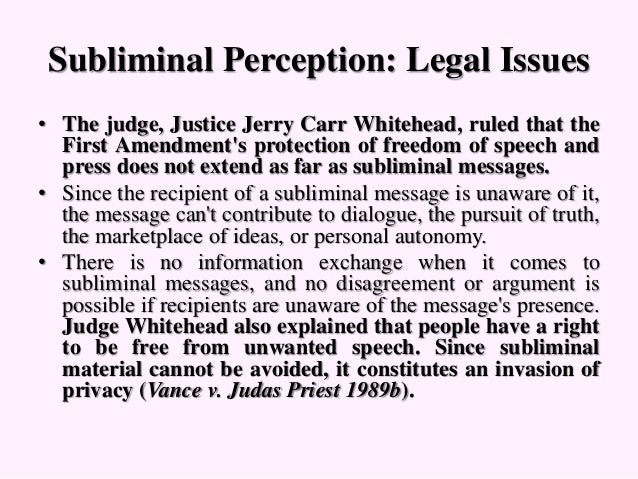

Sigmund Freud’s ideas about the unconscious were also becoming well known at this time, and hypnotism was common both as a therapeutic tool and a form of vaudeville entertainment. In 1895, the French social psychologist Gustave Le Bon published his influential work The Crowd: A Study of the Popular Mind, in which he argued that the conscious personality of an individual could readily be swallowed up by a collective mind, leading to irrational behaviour and intellectual weakness. Those who fell for Vicary’s boasts about the sturdy successes of subliminal advertising were by no means the first-or the last-to encounter this potent mix of circumstances.Īcland points to parallel developments at the end of the 19th and beginning of the 20th centuries. The resulting anxiety crystallizes into an overblown belief in the possibility of remote mind control. He sees it as a much more profound response to being confronted with, on the one hand, strange and new media technologies that deliver ever larger doses of information through novel means and, on the other hand, an intellectual landscape that draws attention to the limits of rational thought and conscious action. In its strongest iteration the subliminal thesis claims, or at least worries, that the things of which we are not aware are more influential than those we can detect, that below consciousness is a wild and impressionable creature that can be reached through messages we cannot perceive.”Īcland argues that obsession with the subliminal was no mere offshoot of Cold War paranoia. “Regardless of its dubious nature,” he writes, “the subliminal thesis harbors a history of ideas about minds, media, and influence. Why is the idea of subliminal messaging so compelling, so durable and so out of proportion with its likely impact on consumers and citizens? This is the question that interests Acland in his richly documented book.
SUBLIMINAL PERSUASION PSYCHOLOGY EXAMPLE TV
presidential election when a TV ad attacking candidate Al Gore flashed the word “rats” for 1/30th of a second, prompting a media kerfuffle and huffy denials from the George W. And accusations of subliminal messaging surfaced during the 2000 U.S.

Federal Communications Commission proscribed its use without any scientific evidence whatsoever of its effectiveness. But far from fading into oblivion, the idea of subliminal advertising has become securely wedged in popular consciousness over many decades. Many suspect the entire experiment to have been an outright fabrication. His results were never published or reproduced, and he himself eventually admitted that he had exaggerated his findings. The advertising incident in question, however, almost certainly never happened, at least not as originally reported by Vicary. Gatling invented his gun.” The editors of The Christian Century decried the impending “robotization” of the population and suggested that citizens mobilize against such forms of mind control by refusing to go to the movies or watch television. An editorial in The Nation warned that “subliminal advertising is the most alarming and outrageous discovery since Mr.
SUBLIMINAL PERSUASION PSYCHOLOGY EXAMPLE MOVIE
When marketing researcher James Vicary announced the results of his movie theatre “experiment” at a press conference in 1957, claiming to have increased sales of popcorn by as much as 57 percent, the media responded with great agitation, as documented by Charles Acland in his recent book Swift Viewing: The Popular Life of Subliminal Influence. My students are not alone in voicing disapproval of subliminal messages (that is, messages that are presented too quickly or too inaudibly to be consciously registered, so that the viewer is unaware of having seen or heard them). The majority sentiment among my students is that advertisers’ use of such techniques is sneaky and unethical, that it subverts an individual’s right to make choices freely without being manipulated by unseen forces. The example almost always provokes vigorous classroom discussion. Whenever I teach my university course “Language and Advertising,” it is not long before students want to talk about the infamous episode in which thousands of movie-goers in the 1950s were exposed to quickly flashed subliminal messages such as “eat popcorn” and “drink Coca-Cola,” causing hordes of people to tramp obediently over to the snack bar to make their purchases without knowing what it was that sparked their sudden desire for refreshments.


 0 kommentar(er)
0 kommentar(er)
